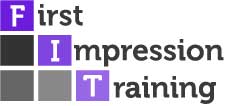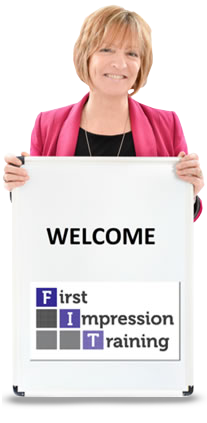Last week I registered to attend an upcoming bitesize learning event, all about how to accelerate performance and development by creating a coaching culture and how to discover new, innovative ways to maintain this success through regular and consistent follow-up.
I’m excited to see what the webinar will bring – I mean, I LOVE LOVE LOVE to learn as you know, and the more innovative the better!
Although, without meaning to sound arrogant, I’m not holding my breath. Because they say there’s no such thing as an original idea, don’t they?
So, this event is really going to have to push the envelope and stretch me outside my hoola-hoop if I’m going to derive any real benefit from attending it – which I will nonetheless, because I can’t learn from somewhere I’ve never been or something I’ve never done, right?
I’ll keep you posted on that one – and in the meantime I thought I’d share something with you this week that definitely IS innovative when it comes to coaching on the frontline – especially if you’re ever involved in those tough conversations with your staff during a 1:1 or (virtual) coaching session.
You know those tricky situations where you have to shoot from the hip with your coachee, while maintaining rapport and empathy and trust?
I learned about some of these ‘language secrets’ while I was completing my NLP Master Practitioner programme and then a few years later, I attend a fascinating workshop run by a wellbeing therapist, whose name escapes me except suffice to say, her teachings about using NLP Language Secrets went way beyond what I’d learned during my Master training.
Since then, I’ve introduced my ‘8 NLP Language Secrets for Coaches’ module into our Coaching Winners Masterclass – and it’s a real winner with my coaching clients.
I know all you leaders, movers & shakers out there will find this week’s FIT Matters super helpful too, the next time you’re faced with a coaching scenario that requires you, as the Coach, to push back or gain commitment or hold your coachee to account, or even hypnotise them to do as you ask or as you know they can do!
NLP LANGUAGE SECRETS FOR COACHES
All of these language secrets require the coach to be fully in rapport with their coachee and are advanced NLP language techniques designed to have a hypnotic effect on your coachee. Therefore, you need to use an appropriate vocal tone, inflection, volume, pace and pausing rate to ensure you balance the hypnotic with the logic!
1. REFRAMING
Use to disagree with what your coachee is saying, when you know for sure that they are factually incorrect, by replacing ‘but’ with ‘and’…
“Yes, and we also want to ensure that we leave the customer feeling good to have spoken with us…..”
“I agree and I want you to feel comfortable with the approach I’m suggesting to you…..”
“I appreciate why you might think that and I can assure you that’s not what I’m asking of you .….”
“I totally understand what you’re saying and we both need to agree on a way forward …..“
2. THE BUT REVERSAL
Use to create a motivational flip when your coachee is stuck in a CAN’T do &/or NEGATIVE mindset…
Coachee: “I’d give it a go BUT I know it will sound fake coming from me”
Coach: ”I know you think it would sound fake coming from you, BUT if you give it a go I think you might pleasantly surprise yourself”
Coachee: “I’ve used that technique before BUT it doesn’t work for me”
Coach: “I know it hasn’t worked for you in the past, BUT if you try it with a different tone / inflection / words you may well find it works perfectly for you this time”
Coachee: “I know we have to do the Welcome / Security Check / Close etc. in the corporate way, BUT I find it really difficult / uncomfortable / scripted saying it that way”
Coach: “I know you think it sounds scripted / difficult / uncomfortable BUT I can assure you, it sounds perfectly natural and free-flowing to me”
Coachee: “I hate being coached / observed / monitored / appraised because I feel really uncomfortable & it’s unnatural for me, BUT I feel as though I don’t have a choice!”
Coach: “Spending regular time coaching/ QA’ing/ observing you is a great way to keep you on track and offer you some personal development time, BUT I appreciate it may feel a little uncomfortable / unnatural for you sometimes”
3. TAG QUESTIONS
Use to elicit agreement and gain commitment from your coachee, to take ACTION! Tag questions should be asked using the hypnotic tone and the sentence should be anchored at the end (inflected downward, as if making a statement) not asked as a question…
“You can do this, can’t you?”
“You’ve got what it takes, haven’t you?”
“You know this stuff works, don’t you?”
“It’s easy once you know how, isn’t it!?”
4. MIND READS
Use to empower your coachee and encourage a positive attitude &/or outlook of their situation. Mind reads make assumptions that success is just around the corner &/or the future is bright &/or there’s only good things to come. Use your hypnotic tone to deliver the Mind Read to your coachee…
“I know you can do this”
“You’re going to handle those calls brilliantly next time”
“You’re learning and developing all the time”
“I can see the difference in your confidence and I know it feels good!”
5. THE HYPNOTIC ‘WHEN’
Use to presuppose success and to motivate the coachee to take positive action. The Hypnotic When dismisses any thought or feeling the coachee may have, consciously or unconsciously, that things aren’t possible or that they’re not capable of doing what their coach is suggesting. The word ‘when’ tricks the coachee into unconsciously believing it’s possible – it’s not a question of ‘if’ only a question of ‘when’!
“WHEN you’ve tried that technique once or twice it will feel as natural to you as breathing”
“WHEN you start getting positive responses to those situations, you’ll know you’ve cracked it”
“WHEN you feel confident handling those difficult customers, you’ll understand why attitude is key to getting to that win-win outcome”
“WHEN you’re a year down the line and winning awards left, right and centre, you’ll appreciate what it means to be a true Brand Ambassador!”
6. KEEPING THE COACHEE AT CAUSE
Use to instill responsibility in the coachee for their own learning and development, in order to hold them to account and help them to live out the RA-O! Factor i.e. help them take full Responsibility, Accountability & Ownership . When you keep your coachee at ‘cause’ and help them to live life at the C-side they are far less likely to become a victim of circumstance or be at the effect of what’s going on!
“How did your actions lead to this result?”
“What did you say that caused this reaction?”
“How can you approach things differently next time to ensure a better outcome?”
“What one thing could you change that would increase your chances of success?”
7. DOUBLE BINDS
Similar to the 2nd Option Technique i.e. where you create an illusion of choice for your customer, by giving them 2 options, both acceptable to you (and them) and you give them the option you would prefer they accept second, changing your vocal tone & inflection in order to influence the choice they make.
Double Binds are used to gently ‘tie down’ your coachee to gain commitment or take action (because there is only a positive decision to make – there’s no room for the NO!) They create a sense of control and empowerment for the coachee, because they create the illusion of choice! Used in exactly the same way as the 2nd Option Technique, Double Binds ensure you get the answer you would prefer, while allowing the coachee to feel fully in control.
“Will you get started on this tomorrow, or do you want to work on it now while I’m still with you?”
“Do you want me to take the next call or will you give that little strategy a try yourself?”
“Do you want to buddy up with (xyz) for a while or see how you go on your own for now?”
“Will you speak to (xyz) later today or do you want to ring them right now to get this sorted?”
8. LIKE ME – LIKE YOU
Use to encourage greater rapport and create a sense of likeness, in order to get your coachee on-side during the coaching session. This NLP Language Secret is a brilliant one where you’re coaching a highly experienced &/or defensive coachee, who may think they’re better than you or superior to you in some way or maybe, you just have a challenge getting on with each other!
Again, this language strategy subconsciously sends a message to the coachee that you’re on their wavelength. We like people who are like us – or who appear to be like us and when we’re like people, we like people!
“LIKE YOU, I find being observed quite unsettling….and I know it’s all for a good cause!”
“LIKE ME, you’re really hard on yourself when it comes to being coached….and that’s a good trait to have, so keep up the high standards!”
“LIKE YOU, I want to push myself as far as I can so that I progress up the organisation, so really take advantage of sessions like this won’t you?”
“LIKE ME, I know you find dealing with the really difficult customers challenging – and that’s exactly why these coaching sessions are useful”
Hope you find these fascinating NLP Language Secrets useful. Let me know how you get on applying them in your coaching sessions or 1:1s – and enjoy reading your peoples’ minds
Until next time – stay safe and keep FIT!
Best regs
Marie



















